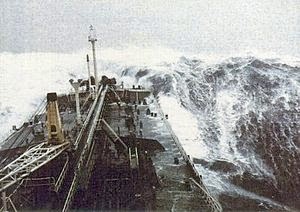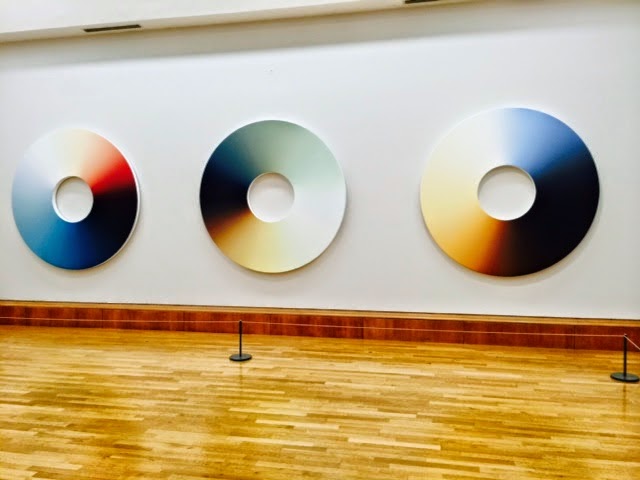This is my second Food
with Thought themed lunch to highlight an area of the world … and as is my
wont give a little extra detail i.e. history …
- Navigation – and the colonisation of Brazil
- The Borgia Pope
- How and why South, middle and North America are mainly Spanish speaking
It was with the advances of navigation and a greater
understanding of the seas, that the Portuguese became the great explorers of
the 1400s …
 |
| Lines dividing the non-Christian world between Castile (modern Spain) and Portugal. The 1494 Tordesillas meridien (purple) and the 1529 Zaragosa antimeridien (green) |
… sailing down the west side of Africa, round the Cape of Good
Hope and on to India … thus bypassing the controlling Turks of the Ottoman
Empire in the Middle East.
Henry the Navigator, (1394 – 1460), the Portuguese Prince,
initiated the exploration down the west coast of Africa and the development of
useful tools, such as charts to expedite this desire for knowledge during the
15th Century (1400s).
The Spanish from 1492 went west and found land in the
Caribbean Islands, before setting foot on the North American continent … Brazil
was found at much the same time in 1500 but by Pedro Alvares Cabral …
Surprisingly to me anyway! … a Papal Treaty (Treaty of
Tordesillas) of 1494 had already divided the world into two … the Spanish Pope,
Alexander VI, (1431 – 1503) instigated this bull
…
… the purpose was to divide trading and colonizing rights for
all newly discovered lands in the world between Portugal and Spain to the
exclusion of other European nations.
 |
| The attractive charismatic Pope: Alexander VI ... |
The Portuguese being given control over Africa, Asia and the
Eastern part of Brazil, while the Spanish received everything west of that line
… only later realising their good fortune …
This is complicated and involves the Borgia Pope mentioned
above … he is one of the most controversial of the Renaissance popes, because
he broke the priestly vow of celibacy and had several legitimately acknowledged
children.
Therefore his italianized Valencian surname, Borgia, became a
byword for libertinism and nepotism …
Anyway – enough of history … shall we eat? Come share with me an aperitif to set us on
our way to that lunch table …
Our sparkling aperitif was “Coco Nova Brut” – a blend from the hot area north-east of Rio: the
Sao Francisco Valley. A drier style made
from blending Sauvignon Blanc, Chenin and Verdejo grapes – the Verdejo are
generally harvested at night – when less oxidation is likely to occur.
Cue in the clues: This
dry sparkling wine fizzes with fresh melon juice, white nectarine flavours,
hints of almond, giving an aromatic, often soft, but richer texture of taste.
 |
| Salmon and Sea Bass Ceviche |
F o o d … we needed food!
This time as our starters we had Salmon
and Sea Bass Ceviche with seasoned leaves, decorated with delicate avocado
pieces and pickled vegetables … this was positively delicious!
Now I need to go to the left-hand side of the menu to check out
the wine … an un-oaked 50:50 blend of Chenin Blanc and Viognier … a good
acidity: excellent to serve with fish.
Cue in the clues: This light in colour, with a greenish tinge,
wine – had a hint of white flowers on the nose, fresh aromas too of pears and
pineapples … soft and supple in the mouth … ‘twas good and tasty!
Where do they get these descriptions?!
Our main course was ‘Chimichurri
Chicken en Croute’ – adapted to our English palates … the chicken was
served en croute … while we had a choice of a lighter, simpler chicken sauce or
the Chimichurri – that’s what I had!
 |
| Chimchurri sauce |
Chimichurri, originally from Argentina, is a green sauce used
for grilled meat … it is based on finely-chopped parsley, minced garlic, olive
oil, oregano and red or white wine vinegar.
This is my style of sauce …
To go with the main course we had a blend from …
 |
| Brazil shown within South America |
Cue in the clues: ruby
dark grapes with a hint of white pepper … which should (?) leave us with a
clean aftertaste … I cannot remember that part … but …
Rio Sol
Cabernet Sauvignon Shiraz … comes from the Sertão … the semi-arid
region in Northeastern Brazil … a Brazilian historian once referred to colonial
life in Brazil as a “civilisation of
crabs”, as most settlers clung to the shoreline …
 |
| The Sertao ... the semi-arid north-east |
The director of the Portuguese wine company Dao Sul just adds
to this picture … as he advises his workers to “watch out for alligators” as they sometimes come up from the river
and nip the workers’ ankles as they harvest the grapes.
As introductions go, this advice is a little
unusual, even by the standards of eccentric vineyard owners.
A Rosé – to go with the dessert – but this has a very
descriptive hue … Rio Sol Touriga
Nacional Shiraz Rosé evokes an intense fruity flavour …
Cue in more clues: predominantly cherry, strawberry, blueberry
and raspberry … giving us a playful after-taste to enjoy our German-Brazilian
dessert.
Pudding! Torta Alemã is
a Brazilian dessert, though its name in Portuguese means “German Pie”. Many Germans settled in Brazil … so various
recipes became absorbed into Brazilian food lore.
This was particularly delicious … the chocolate “ganache” in
this pie is called brigadeiro de colher, and
is a spreadable version of the very popular Brazilian chocolate fudge truffles
called ‘brigadiero’ …
 |
| Brigaderios |
We had Columbian blend filter coffee and brigaderios to follow
… I might say we had one older chap on our table who ate all of these – without
offering them round … he was remarkably selfish and his conversation was all
about himself!! We were polite and I
knew one other lady on the table … so we laughed a lot …
Linda fortunately knew the wine merchant’s representative –
her daughters had gone to school and socialised with him and other friends …
 |
| Representation of the landing by Petro Cabal in 1500 |
… he was the worse for wear, poor chap, as his wife had
recently had a difficult birth … but all was well with their daughter … he
looked somewhat drained! But I think was
grateful he was sharing the table with us … and ‘felt at home’ with Linda
around … and not a load of fuddy duddies!!
 |
| Gathered grapes in Brazil |
We had this lunch on 21st October and I see I noted
that our weather was much the same as in Brazil 19 deg C (66 deg F): cloudy
with rain!
I hope you all had a lovely Thanksgiving, questionable Black
Friday … and I’m sparing a thought for Denise in Brisbane after the major
vortex storm that ripped their coastline apart on Thanksgiving Day …
Oh by the way .. this was held at the same seafront hotel as the South African lunch ...
And out of interest our temperature is still so warm ... yesterday the day of posting we had 13.8 deg C - which is 55.84 deg F .. today it's slightly warmer ...
Oh by the way .. this was held at the same seafront hotel as the South African lunch ...
And out of interest our temperature is still so warm ... yesterday the day of posting we had 13.8 deg C - which is 55.84 deg F .. today it's slightly warmer ...
Hilary Melton-Butcher
Positive Letters Inspirational Stories







































